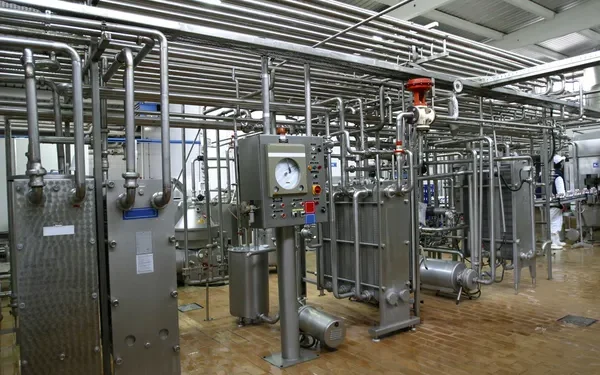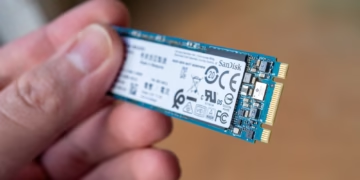Are you responsible for ensuring the safety and reliability of pressure vessels in your organization? If so, it is crucial that you understand the codes and standards set forth by the American Petroleum Institute (API) for pressure vessel inspections.
API 510 is a standard that outlines the requirements for maintaining and inspecting pressure vessels used in various industries, including oil and gas, chemical processing, and power generation. Adhering to API 510 guidelines can help ensure that your pressure vessels are operating safely and efficiently, minimizing the risk of accidents or downtime.
Understanding these standards will also help you communicate effectively with inspectors, engineers, and other professionals involved in maintaining your equipment.
In this article, we will provide an overview of API 510, key requirements to follow when adhering to this standard, how to understand the inspection process, as well as benefits of implementing API 510 guidelines within your organization.
Key Takeaways
– Adhering to API 510 guidelines for pressure vessel inspections ensures safe and efficient operation while minimizing risks associated with high-pressure systems.
– Regular inspections can help identify potential issues early on, improving vessel reliability, and minimizing downtime.
– Non-destructive testing methods such as ultrasonic testing, radiography, and thermal imaging analysis are particularly valuable in identifying potential defects or weaknesses.
– Following industry regulations and adhering to best practices can significantly improve the safety and performance of pressure vessels in various industries, including oil and gas, chemical processing, and power generation.
Overview of API 510
Let’s take a quick look at API 510, the bible of pressure vessel inspections that lays out everything you need to know about keeping these metal giants safe and sound.
API 510 is an industry standard that serves as a guide for the inspection and repair of pressure vessels used in oil refineries, chemical plants, and other industrial settings. The document provides clear guidelines on how to ensure vessels remain safe and operational over their lifespan.
To be certified in API 510, inspectors must have extensive knowledge of codes and standards related to pressure vessel design, construction, operation, maintenance, and repair. They also need to understand the principles behind non-destructive testing techniques such as ultrasonic testing or radiography.
By adhering to these strict requirements, inspectors are equipped with the necessary skills needed for maintaining the highest level of safety when it comes to pressure vessels. It is crucial that we understand the importance of adhering to API 510 guidelines so we can minimize risks associated with these high-pressure systems without compromising their performance or reliability.
Importance of Adhering to API 510
You know that sticking to the guidelines for pressure vessel inspections is crucial because it ensures safety and prevents accidents. API 510 is a set of codes and standards that helps you ensure that your vessels are safe, reliable, and compliant with regulations.
Here are some of the benefits of adhering to API 510:
– Improved Safety: Adhering to API 510 ensures that your vessels are inspected regularly and thoroughly, reducing the risk of accidents caused by equipment failure.
– Compliance with Regulations: By following API 510 guidelines, you can be sure that your vessels meet all relevant industry standards and regulatory requirements.
– Increased Reliability: Regular inspections help identify potential issues before they become major problems, improving vessel reliability and minimizing downtime.
– Cost Savings: Preventive maintenance through regular inspections can save you money in the long run by avoiding costly repairs or replacements.
The importance of adhering to API 510 cannot be overstated. It not only ensures safety but also provides many other benefits such as compliance with regulations, increased reliability, and cost savings. To reap these benefits, it’s essential to have a thorough understanding of the codes and standards outlined in API 510.
This leads us into our next section, discussing key requirements of API 510.
Key Requirements of API 510
As an inspector, you need to be familiar with the key requirements of API 510. This includes inspection intervals, procedures, and repair and alteration requirements.
For inspection intervals, you need to know the maximum allowable interval for different types of vessels based on their service and design conditions.
When it comes to inspection procedures, you should follow a systematic approach that includes visual examination, non-destructive testing (NDT), and other techniques as necessary.
Finally, for repair and alteration requirements, you need to know when repairs or alterations are necessary and how they should be carried out in compliance with the code.
Make sure to use contractions to make the text more conversational.
Inspection intervals
Inspection intervals can be a matter of life and death, so it’s crucial to follow the codes and standards carefully. API 510 provides guidance on inspection frequency based on the vessel’s design, service conditions, and previous inspection results. The minimum interval for internal inspections is every five years, while external inspections should occur at least once per year.
Maintenance planning is a critical component of ensuring that inspections are conducted at the appropriate intervals. This includes scheduling downtime for inspections, coordinating with personnel responsible for repairs or modifications, and maintaining accurate records of all maintenance activities. By following these guidelines, you can ensure that your pressure vessels remain safe and reliable over their entire operational lifetime.
As you move into the next section about ‘inspection procedures’, it’s important to keep in mind that proper preparation is essential for conducting effective inspections.
Inspection procedures
Proper preparation is key to ensuring effective and reliable evaluations of the condition and integrity of pressure vessels during inspections. Inspection procedures involve different techniques, such as visual inspection, dye penetrant testing, magnetic particle testing, radiography, ultrasonic testing, and eddy current testing. Each technique has its advantages and limitations in detecting defects or flaws that may affect the safe operation of the vessel. Therefore, it’s essential to use a combination of techniques based on the type and location of potential damage to achieve a comprehensive assessment.
Non-destructive testing (NDT) methods are often used for evaluating pressure vessel components without causing damage or affecting their future performance. NDT methods include ultrasonic thickness measurements, acoustic emission monitoring, thermal imaging analysis, and leak detection tests. The selection of NDT methods depends on several factors such as material properties, accessibility to the component or joint being inspected, sensitivity required for detecting flaws or cracks, and applicable codes and standards.
By following proper inspection procedures using appropriate techniques and NDT methods, potential risks can be identified early before they lead to equipment failure or accidents. This ensures that repair or alteration requirements can be implemented timely with minimal cost impact on operations while maintaining the safety of personnel and assets.
In conclusion, inspection procedures are crucial in maintaining safety standards when working with pressure vessels. Various inspection techniques, including non-destructive testing (NDT) methods such as ultrasonic thickness measurements, help identify defects without damaging equipment. This leads to repair/alteration requirements, which are discussed further below.
Repair and alteration requirements
When repairing or altering a pressure vessel, you’ll need to follow specific requirements and guidelines to ensure the integrity and safety of the equipment. Here are four important things to keep in mind when undertaking repairs or alterations:
1. Repair documentation: All repair work must be documented in detail, including any non-destructive testing (NDT) performed before and after the repair.
2. Welding procedures: Welding on pressure vessels must be performed by qualified welders using approved welding procedures.
3. Material selection: Any replacement materials used during repairs or alterations must meet the minimum requirements specified in API 510.
4. Inspection after repair: After any repairs or alterations have been completed, the pressure vessel must undergo an inspection to ensure it is safe for use.
Following these guidelines will help ensure that your pressure vessel remains safe and reliable over its lifespan.
Moving on to understanding the inspection process…
Understanding the Inspection Process
You’ll need to understand the steps involved in inspecting pressure vessels to ensure their safety and reliability. The inspection process involves a range of techniques, including visual examinations, non-destructive testing methods, and assessment of the vessel’s service history. Inspection techniques may vary depending on the type of vessel being inspected and its intended use.
Non-destructive testing methods are particularly valuable in identifying potential defects or weaknesses that could compromise the integrity of the vessel. These tests include ultrasonic testing, magnetic particle testing, radiography, and liquid penetrant inspection. By using these techniques to identify areas of concern early on, inspectors can prevent more serious issues from developing over time.
api 510 Understanding how inspections work is critical for ensuring that pressure vessels operate safely and efficiently over time.
By following API 510 standards for pressure vessel inspections, you can benefit from a comprehensive approach to maintenance that ensures your equipment is kept in good condition year after year. Rather than waiting until something goes wrong with your pressure vessels before taking action, you can take proactive steps to keep them operating at peak efficiency through regular inspections and maintenance activities.
With proper attention paid to inspection processes and non-destructive testing methods, you can feel confident that your pressure vessels will continue providing reliable service for years to come.
Benefits of API 510
As you delve into the benefits of API 510, you’ll discover how this standard can help your organization achieve compliance with regulations and improve safety and performance.
By adhering to the guidelines outlined in API 510, you can enhance your pressure vessel inspection processes while also increasing efficiency and reducing costs.
With a greater understanding of these key points, you’ll be better equipped to implement API 510 standards within your own organization.
Compliance with regulations
To ensure compliance with regulations, it’s crucial to have a thorough understanding of the codes and standards for pressure vessel inspections. The API 510 provides guidance on regulatory compliance and industry standards for pressure vessel inspections. It covers important aspects such as design, fabrication, maintenance, repair, and alteration of pressure vessels.
Having a comprehensive understanding of these codes and standards is essential to avoid costly fines or legal action due to non-compliance. Moreover, adherence to these regulatory requirements ensures safe operation of pressure vessels in different industries.
Next, let’s discuss how following these standards can lead to enhanced safety and performance of pressure vessels.
Enhanced safety and performance
By following industry regulations and adhering to best practices, you can significantly improve the safety and performance of your pressure vessels. One way to do this is through training programs that educate personnel on proper inspection techniques, maintenance procedures, and safe operation guidelines.
These programs should cover all aspects of pressure vessel operations, from design and fabrication to installation, commissioning, and decommissioning. Industry adoption of these training programs has been increasing in recent years as companies recognize the importance of ensuring their equipment is operated safely and efficiently.
In addition to improving safety, enhanced performance can also lead to cost savings by reducing downtime for repairs or replacements. By investing in employee education and staying up-to-date with industry standards, you can avoid costly accidents while maximizing the lifespan of your pressure vessels.
Moving forward into the subsequent section about how adherence to codes and standards can directly impact your bottom line, it’s important to understand the value of employee education and training programs.
Cost savings and efficiency improvements
Improving safety and performance in your pressure vessel operations can directly impact your company’s profits by reducing downtime and maintenance costs. Conducting regular inspections can help identify potential problems early on, allowing for proactive maintenance planning that can prevent costly equipment failures and unplanned shutdowns.
Additionally, implementing cost analysis strategies such as risk-based inspection (RBI) can optimize inspection schedules based on the likelihood of failure and the consequences of that failure. Investing in training for inspectors and technicians can also lead to improved efficiency and cost savings.
Properly trained personnel are more likely to identify issues early on, reducing the need for extensive repairs or replacements down the line. Furthermore, establishing a culture of safety within your organization can result in fewer accidents and incidents, which not only saves money but also enhances your reputation as a responsible industry leader.
By prioritizing safety and incorporating cost analysis techniques into your maintenance planning, you can improve efficiency, reduce downtime, and ultimately increase profitability for your company.
Conclusion
Congratulations on completing this article about API 510! It provides a comprehensive understanding of the codes and standards for pressure vessel inspections. By following the guidelines outlined in API 510, you can ensure that your pressure vessels are maintained safely and effectively.
Adhering to API 510 is crucial for businesses that operate with pressure vessels. It ensures that these vessels are inspected and maintained according to industry standards. This reduces the risk of accidents or failures that could result in injury or damage to property. By understanding the key requirements of API 510 and following its inspection process, you can reap the benefits of a safer and more efficient operation.
Overall, API 510 is an essential tool for any organization that utilizes pressure vessels. Its guidelines provide a framework for safe and effective maintenance practices. They also ensure compliance with industry standards. Investing in proper inspection procedures will not only protect your business but also contribute to a safer work environment for all involved parties.
So don’t hesitate – start familiarizing yourself with API 510 today!
Also Read Interesting Articles At: Tech New Master.



















